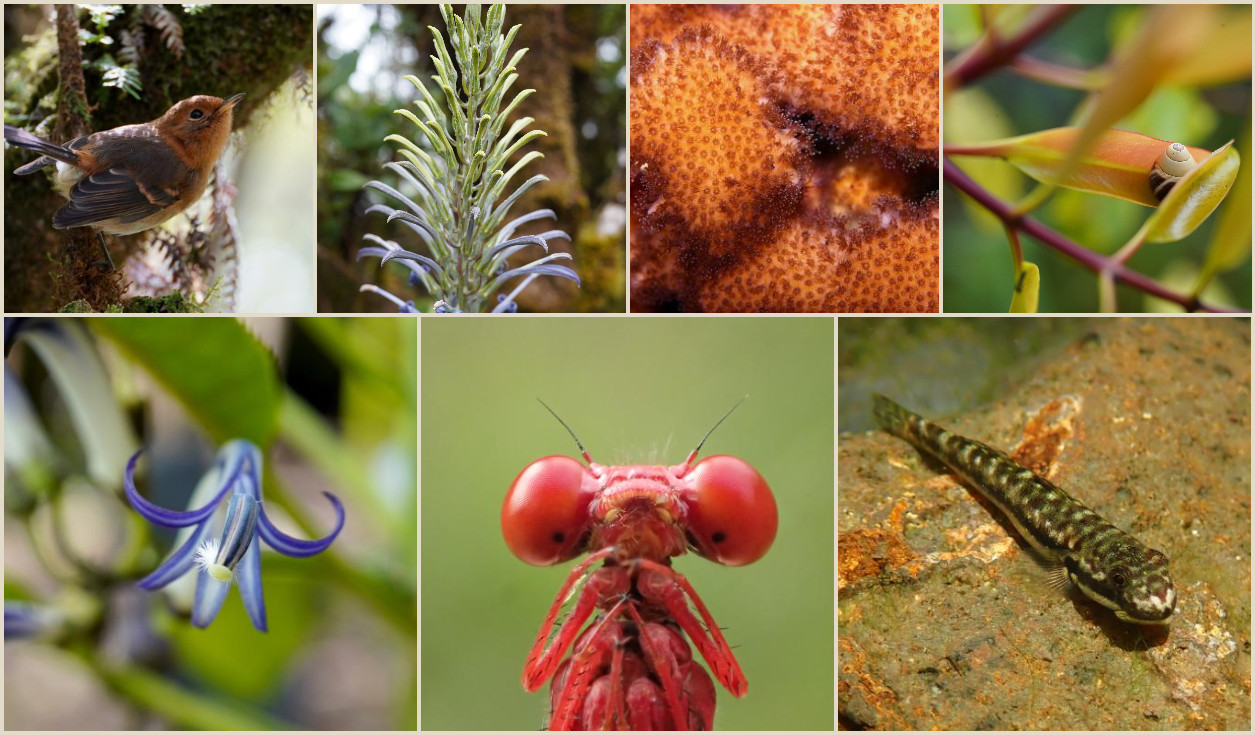(BIVN) – Hawaiʻi residents are invited to review the 2025 State Wildlife Action Plan (SWAP), with an online meeting set for later this month.
The Hawaiʻi Department of Land and Natural Resources’ Division of Aquatic Resources, and Division of Forestry and Wildlife, are seeking public input “on conservation priorities for Hawaiʻi’s unique native wildlife and habitats.”
The meeting will take place virtually via Zoom on Tuesday, April 29. There will be a morning session (10 a.m. to 11 a.m.) and an evening session (5 p.m. to 6 p.m.)

Top row: Kauaʻi ʻelepaio (Chasiempis sclateri); Lobelia oahuensis; Molokaʻi cauliflower coral (Pocillopora molokensis); kāhuli (Achatinella mustelina) Bottom row: Cyanea rivularis; pinapinao (slender Kauaʻi damselfly, Megalagrion oresitrophum); ‘o‘opu nōpili (Nopoli rock-climbing goby, Sicyopterus stimpsoni) Images from the SWAP Storymap via Hawaiʻi DLNR.
The DLNR provided this information for attendees:
- Join Zoom Meeting: hawaii.zoom.us/j/83526168265
- Meeting ID: 835 2616 8265
- Passcode: 864652
From the Hawaiʻi DLNR:
The SWAP is a comprehensive statewide framework for conserving species and habitats. Updated every 10 years, the SWAP identifies “Species of Greatest Conservation Need” and outlines voluntary, proactive strategies for protection and restoration.
“We want to hear from everyone — whether you’re a researcher, educator, cultural practitioner, landowner, or just someone who cares about Hawaiʻi’s native wildlife,” said Maya Goodoni, DAR watershed management specialist. “Your insights help ensure the SWAP reflects what matters most to the people and ecosystems of Hawaiʻi.”
The public review will include an overview of the SWAP process, highlight key updates for 2025, and provide space for public questions and feedback.
The SWAP plays a key role in securing federal funding through the State and Tribal Wildlife Grants Program and supports collaborative conservation efforts across the Hawaiian Islands.


by Big Island Video News8:24 pm
on at
STORY SUMMARY
HAWAIʻI - The Hawaiʻi Department of Land and Natural Resources is seeking community input that will guide wildlife conservation statewide.